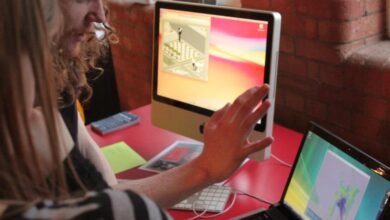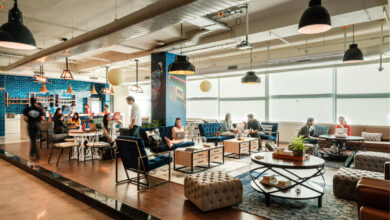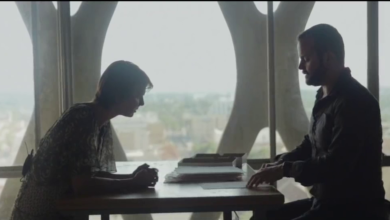Summary – New Urban Informatics 27th May 2014
How can we outfox our Smart Cities?
On Tuesday 27th May Cybersalon held a debate about the use of technology in towns and how we can balance the needs of the City with the feeling of belonging, trust and intimacy that we grew to expect of our neighbourhoods.
Dr Sophia Drakopoulou, researcher into Location-based services at Middlesex University and the chair of the evening introduced the topic of New Urban Informatics and the findings that Smart cities tend to be described as top down creations where governments can monitor and surveil. This should be leading in theory to greater efficiency of resources, but also to greater control over the citizens and less of sense of co-ownership. It is us versus them, in a divided and embattled city.
She poses a question how can we take back our urban environments and make data work for us, innovating with respect for privacy, collaborating for fun and work, and enjoying the City on our terms. What do we want our cities to become and how we can get involved with them to create the environments we seek.
She highlighted the growth of the “subvert the Surveillance” stream of work by artists like Julian Oliver (http://julianoliver.com/output/) with his Transparency Grenade, James Bridle (http://booktwo.org/notebook/drone-shadows/ Installation on Drones in the City ), Max Colson (http://www.maxcolson.com/hide-and-seek/selected-photographic-reconnaissance/ who all focus on Big Brother oppressive and negative tech that impacts on our sense of belonging. Sophia comments on the clear tension between the top-down, order inducing technology of the powers that run the City, and us, the hapless and powerless inhabitants of the often opaque urban environment in which people are finding it increasingly hard to self-organise and create communities.
As she has just got back from her native Greece, where much of the first world urban order has collapsed as a result of extraordinairy austerity imposed on the people, her perspective on what level of order is actually required to run the basic civilized city is well informed by recent decay of Athens and leads to a different perspective on “minimum viable top-down technology” required for civilized urban living than you hear on the average Smart City talk.
The first speaker is Usman Haque, a London-based architect and artist who designs bottom-up interactive architectural systems and is interested in the ways that people relate to each other and to their surrounding space. Umbrellium http://umbrellium.co.uk/ creates participatory City experiences and services that empower people to transform their cities by themselves. Umbrellium was awarded the Must-Follow Company at the 2013 Internet of Things Awards. Usman’s work is much loved as it offers support for the disempowered inhabitants to reclaim the ownership of a place and join together in creating beautiful art pieces in one magic moment of triumph of humans over city jungle.
One of his early projects Patchube (http://umbrellium.co.uk/portfolio/pachube/) was one of the world’s first Internet of Things cooperative search engines, aimed at enthusiasts and developers and launched to support the emerging community in a bottom-up manner. It has grew fast and is one of the biggest spaces to share IoTs on.
He shows how large tech companies misinterpret the challenge, seeing the city as a ‘problem’. Once example is showing the big tech company idea of replacing the traffic lights with the interactive signs on the road. Great idea for saving on traffic lights, but as it asked people to look down instead of just sideways to observe the passing traffic, it would have been much less safe than the current , admittedly expensive solution of traffic lights at the eye level.
The uberhype of Internet in a Fridge (http://fuckyeahinternetfridge.tumblr.com/page/4 shows the risks of overreaching technology applications, where large tech companies often forget how much unsustainable infrastructure is needed for the novelty tech stuff to really function, while providing very little improvement to the users except for the short-lived gadget value.
Usman argues that the concept of Smart City is actually philosophically flawed as it assumes the top-down process of centralised solution would help. In fact, Usman notes it would disable the already alienated citizens even more, leaving them without the person-to-person ability to problem solve in the small group, as people always did but are now increasingly stopped from doing by a remote technology and algorithms that are intrasparent and unaccountable to locals.
The algorithm for traffic flow for specific streets for example should be set locally, after consultation with the users on those specific streets. However, this process never takes place instead relying on central rule-setting, leading to traffic jams for no other reasons than overcentralised rules. That can be easily addressed with the local sensors or local people using a traffic-flow up, consulting and giving feedback. City management hides behind algorithms and blames all the mishaps on machines, thus giving up responsibility for their priority function, to look after communities and make life save and secure for all.
He argues for an Engaged City, enabling citizens to help themselves, to organise and to collaborate on whatever challenges are there to solve and favouring the rich domain knowledge of local specifics over an abstracted rule setting in a remote centralised location. It is enough to remember that the same efficiency arguments were used to promote high rise buildings and highways in the 50ties, and we all know how much damage it has caused to the communities where there were “no eyes on the street” and no sense of belonging, with alienation eventually leading to high crime and ghettoization of those areas (Jane Jacob
The Death and Life of Great American Cities Motorways lead to increase in asthma, high risers to poor health and splicing of community, both of them in the same place generating an environment prone to sliding into deprivation embedded in chronic poverty like Birmigham or the area of White City in London.
Usman talks about Open Burble (http://www.haque.co.uk/openburble.php )- a project to teach community to do something big together in the context of creating a large, balloons filled structure. This task forced people to collaborate, to assess and apply their combined resources and to forge cooperative groups to achieve a beautiful goal. Usman makes a point that Cities are very hard for people to self-organise and for communities to be resilient, and today’s artists and technologists have an opportunity to come out with interventions to teach communities to be resilient through creative projects.
Usman gave example of Japan after the earthquake, where people did not trust official Geiger meter readings as government was lying to keep the population calm, so using Pachube.com the locals were able to build their own Geiger counters, and build bottom-up trusted maps of real radiation spread (http://spectrum.ieee.org/tech-talk/energy/environment/radiation-monitoring-in-japan-goes-diy
They were not the most precise readers, but people wanted just to see the trends, as in is it going up or is it improving. They trusted more a stranger with a home-made Geiger than a top science level Geiger from the Institute of Nuclear Power as the chronic breakdown of trust occurred due to official misrepresentations.
The network of SMS alerts was created, asUsman points out that this is one of the best ways to link neighbourhoods together for resilient actions and using fairly low-tech solution for urgent and large-scale interventions.
He also presents a “Plant by power socket- Natural Fuse” project, (http://www.haque.co.uk/naturalfuse.php where community has to share the neutral carbon footprint. The plants were given to home owners and the amount of oxygen generated by each plant was offset by the amount of electricity each home used.
If the house used more than their fair share of electricity, the plant of the owner of the house would die. It was to illustrate in practice and a visual way that we depend on each other and to elicit altruistic behaviours amongst strangers but also participants in a community of oxygen users. It was made stronger by sending an email to the person whose plant died. It was also emphasizing that you already ‘own’ the air in your city, and you are a very active factor in the quality of it on everyday basis.
Ownership increases responsibility, so interventions bringing that message to people are particularly useful as community building projects. Citizen Kit, an Arduino- based set of tools to measure air quality and other indicators of City’s health are first step to take back civic commons.
Usman argues for Engaged, Self-Quantified but Connected City, empowering the participants to use data for improving local living conditions . (see also Networked High Street ( https://cybersalon.org/retailtech/ by Eva Pascoe and Niki Gomez on the self-healing systems for the City,
Frank Kresin
Research Director at Waag Society in Amsterdam, Institute for art, science and technology. The research programme consists of six research themes, aimed at healthcare, education, culture, society, the government and the business world. Frank has a background as filmmaker and holds a masters degree in Artificial Intelligence from the University of Amsterdam. Waag has a long tradition of urban informatics, with recent successful projects like delivering Citizen Kit (http://waag.org/en/event/smart-citizen-kit-evaluation which allows local people to as what are the real levels of air pollution around your home or business? And what about noise pollution? And humidity? We can imagine that we would have this information, and share it instantly and compare it with other places in your city, in real time – this is what Citizen Kit project offered.
Frank has also contributed to development of an Open City data platform for Manchester,( http://waag.org/en/project/smart-citysdk ) . He argues that Smart Cities are only as Smart as their Citizens. Waag specifies 4 principles that need to guide New Urban Informatics; Best user of Smart Cities is coproducer, people can learn new behaviour if the motivation is high enough, sharing of data and sharing in general is the key drive to contemporary City tech innovation, and finally making it is crucial to understand and act.
Involved Citizen is a Citizen Maker, who by his own active choices of data they consume, can also understand what data is useful for others. Waag Society promotes technology for social encounters that are meaningful and provide a glue for the local community,
If locals use Open Data for Transport, they can understand how they themselves can contribute to this data. So adding their own value to maps via comments on safe bicycle lane, good schools, maintenance of the parks helps to create the real time neighbourhood maps all adds up to the community assets.
Frank also tells a process of selecting a school for your kids in the new area, which should consist of a contact with the Mayor office and obtaining a spreadsheet with local data.
At the moment the data City data is hard to process, and to match as formats different, where clean ups are very labour intensive, with wide margins of error, often unreliable, mostly not interoperable.
There is a better way, as shown during an EU Cities program on Cities SKD with open service interfaces, process guidelines and standards and share option.
Particularly participation in local decision making, tourism and transport are areas that Frank’s group is focusing on.
Transport data can come from different data sources, but “where should I park my car” is increasingly important question both for sustainability and cutting down the 15% of car journey element which goes on “finding the parking”. Link data has increasing role in the City SDK architecture . On top of SDK the platform allows API for anyone to develop in integration with Manchester system. Supporting Open Source Association the project provide for example assets for maps of buildings by age, a nice example of the use of data for both practical and educational reason.
More solutions like Data Globe, Park Shark (calculate the cheapest parking in real time), also the Tree Spotter which locals can report on if damaged, which helps to detect the pattern of winter salt damage and alert the Council to act on time to save the tree are all example of involved local data activists.
City Dashboard supports Smart Citizen Kit, bringing together 13 partners to create data feed that measure a number of data sets.
Before rounding up Frank invites all to parcitipate in the project and promote the platform in other Cities in UK and EU.
His vision is similar to Usman in as much he belives that the co-creation of data flow will make local ‘hoods part of the solution and lets them drive the pace and the next round of requirements to improve the City life for both residents and visitors.
Siraj Salim
Director of UX at Apppli an award-winning mobile app development company, who focuses on how people interact with City applications, and the value of providing “less is more” approach to User Interface. He shows examples where the extension of choices on options have only led to less conversion to purchase or use as people “used up “ their cognitive resources on search and lost the will for purchase or action by the end of the overextended decision making process when the number of options was too large for the purpose of the design situation.
He refers to ibeacons as new additions to our New Urban Informatics and again leads to conclusion that those need to be introduced by people in a very gradual manner, to give the ‘hood or local situation participants the sense of co-producing and co-ownership of the public space.
His argument is that in order to create a trusted environment, a clear opt-in is fundamental in terms of geolocation and time-based situations where the security and privacy are a consideration both inside the retail or Museum spaces as well as on the street, ie public space.
Ruth Catlow
Co-Founder and Artistic Director of the Furtherfield online community for arts, technology and social change. Ruth reports on collaborative bottom-up ways of constructing the City projects and discuss Furtherfield’s exhibition Digital Zoo, currently touring UK shopping centres. Ruth also covers the current Play Your Place an open software platform for people to draw make and play the future of their place together.
Her project demonstrates to people the high risks and vulnerabilities of showing the photos of kids’ bedrooms on Facebook, as parents often do. One of the projects shown took an inspiration form a blog by a young girl and the photos of her bedroom. The artist has faithfully re-created that bedroom just from those Web photos and made it into a gallery exhibit, demonstrating how much of a security and privacy tensions are occurring out of indiscriminate posting of daily life on line.
The project also helps to visualise other problems of digital life and the need to involve the individuals to co-create using the technology provided.
Link http://www.furtherfield.org/programmes/exhibition/digital-zoo-UK-TOUR-2014
In the discussion, the common theme that has emerged from both creative technologists, UX designers and digital artists was that New Urban Informatics must be considered in the context of Community Informatics, and led by the bottom- up collaborative tools provided to people to populate the data sets by themselves. The role of the City is to support that and develop the enabling infrastructure inviting people to play, contribute, share and build up the picture of what is around them. That will lead to better awareness of scarcity of shared resources and creating opportunities for self-healing for the communities.
This process is both creative, participatory and educational, as the best users are the co-producers, and the community can engage local people in the selection and making of the next generation of Smart Cities tools for us all to use.
Technology can provide a smoother, more efficient framework on match volunteers with the tasks needed, to bring work-space seekers together, to match retail and parking to create a stress-free journey, to offer value from your favourite shops but also allow to experience a city-wide real-time pub quiz on Sunday afternoon.
All those require people and machines to come together in Local-centric thinking to support local activities to heal and build resilient neighbourhoods (http://urbanscale.org/about/adam-greenfield/ After all “local” is the new black!
As Usman Haque says : “ don’t use the Smart City just to file complaints”, but instead use a collaborative approach to find people who can help out in the solution. Using Evegeny Morozov phrase, the Smart City is not about solutionism, but about social and tech integrating harmoniously to support the humans developing strong communities in the concrete jungle.





Glad I’ve finally found soinhtmeg I agree with!